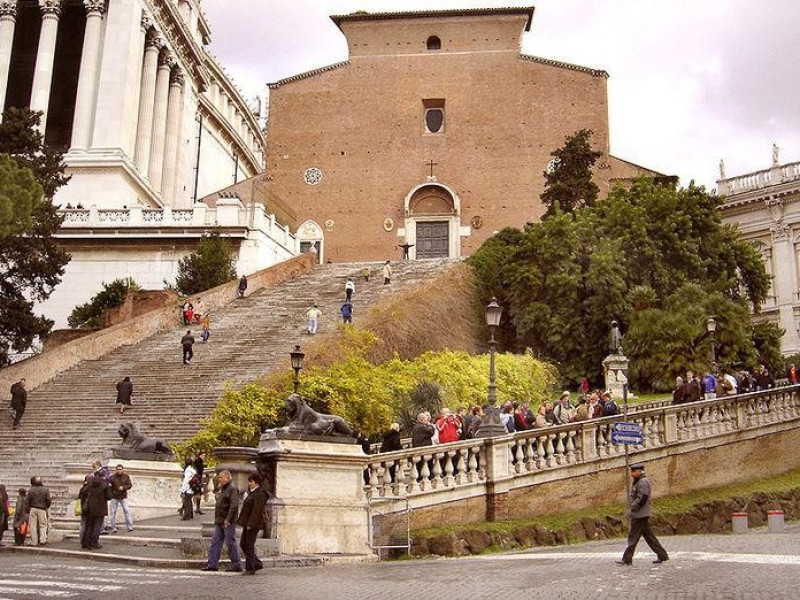Basilica di Santa Maria in Aracoeli
The Basilica of St. Mary in Aracoeli is located on Campidoglio, perhaps on the ruins of the Temple of Juno Moneta. The original name was St. Mary in the Capitol, as part of the monastery established on the Capitoline Hill, while about the origin of the current name, attested from 1323, there are only legends such as the one linked to the vision of the Madonna and Child by Augustus. The first construction dates back to the sixth century (with the nuclei of the churches of St. Biagio of the Market and Insula Romana). Nel 1250 the property was given to the Franciscans, who restored the Church giving it its current Roman-Gothic appearance and building the imposing staircase as a vow to the Virgin to end of the plague. In 1341, here it was graduated poet Francesco Petrarca and, again in this building, took place the celebration of the victory in the Battle of Lepanto, in 1571. With the arrival of the French in 1797, the Church was reduced to the stable and most of the decorations were lost. With the Unification of Italy, the property passed to the state. The interior has three naves with round arches, a transept slightly protruding, and is equipped with three apsidal chapels. There are many treasures in the Church: in the counterfacade is shown the tomb of Cardinal Ludovico d'Albret, by Andrea Bregno (1465); later, there is an altar with "Madonna and Child" (Viterbo school of the fifteenth century). The Church is famous for the "Holy Child", fifteenth century sculpture in olive wood of Gethsemane, stolen in '94 and replaced by a copy: according to tradition, the statue was to have miraculous powers.


